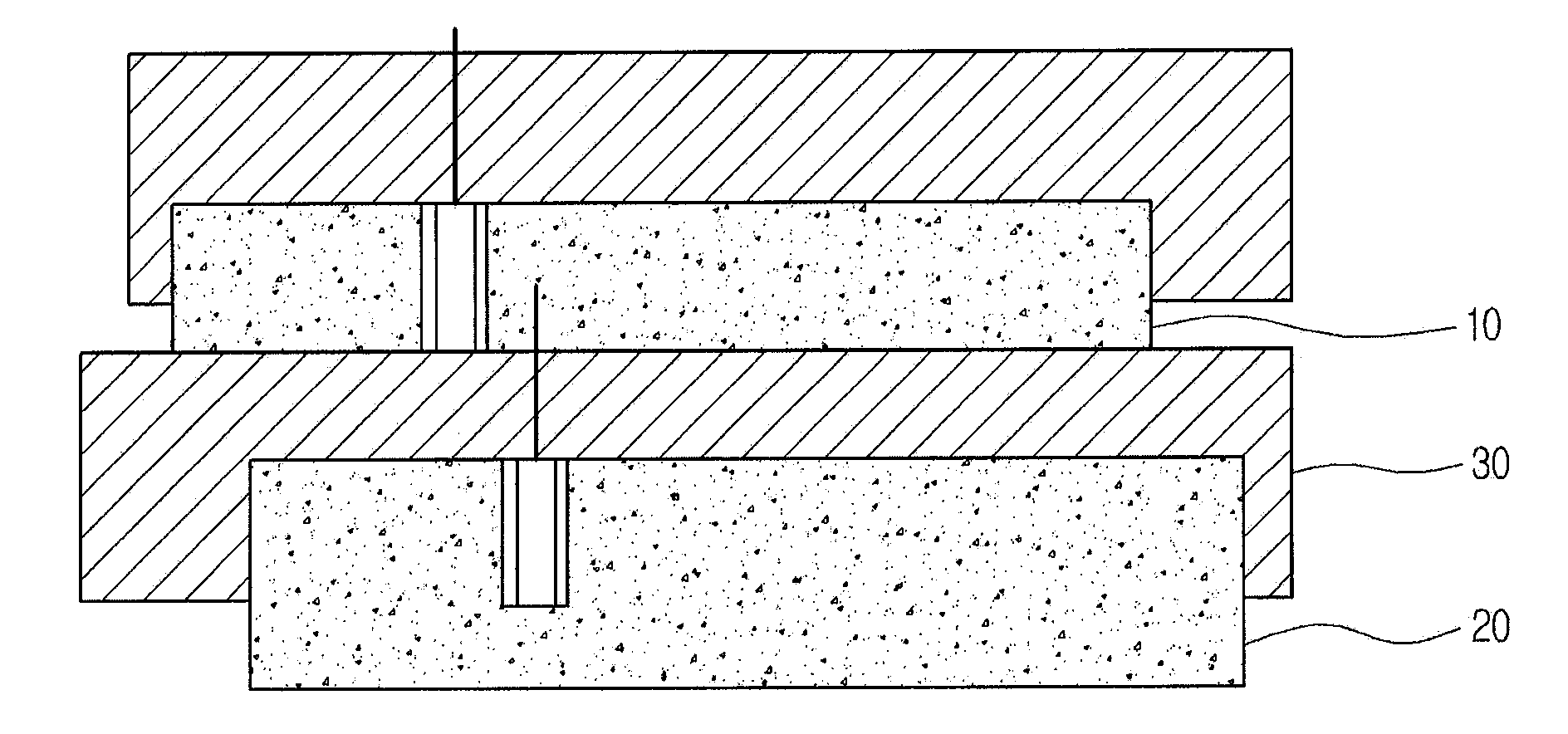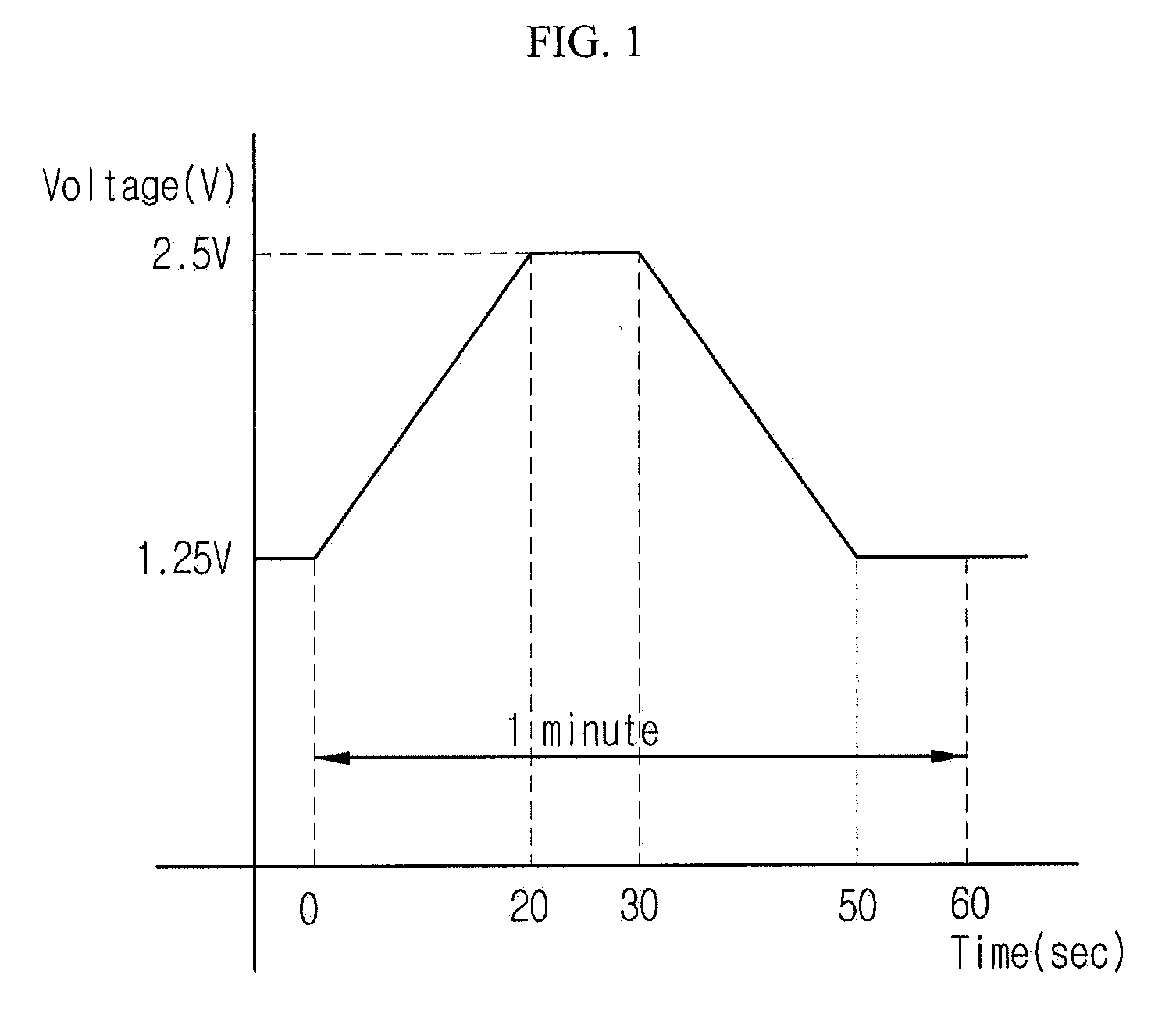Hybrid Battery
a hybrid battery and battery technology, applied in the direction of non-aqueous electrolyte cells, cell components, sustainable manufacturing/processing, etc., can solve the problems of short cycle life and low power density, difficult to manufacture systems (2) on an industrial scale, and overcome low capacity
- Summary
- Abstract
- Description
- Claims
- Application Information
AI Technical Summary
Benefits of technology
Problems solved by technology
Method used
Image
Examples
example 1
[0071]A capacitor was manufactured using LiMn2O4 as an anode active material and activated carbon having a capacity of 140 F / g and a specific surface area of 2,000 m2 / g (MSP-20, Kansai Cokes) as a cathode active material.
[0072]Specifically, an anode was produced by mixing 75% of the anode active material, 15% of carbon black and 10% of PVDF as a binder to prepare a slurry, and coating the slurry to a thickness of 50 μm on both surfaces of a 20 mm-thick aluminum foil so that the anode had a total thickness of 120 μm. A cathode was produced by mixing 75% of the cathode active material, 15% of carbon black and 10% of CMC and PTFE as binders, and coating the mixture to a thickness of 100 μm on both surfaces of a 20 mm-thick aluminum foil so that the cathode had a total thickness of 220 μm. The electrodes were cut to a size of 3 cm×40 cm, wound in a cylindrical form, and placed in a can (18 mm (D)×40 mm (L)) to fabricate a cell.
[0073]As solutes of an electrolyte, 0.65 M lithium tetrafluo...
example 2
[0074]A cell was fabricated in the same manner as in Example 1, except that Li(Ni0.37Cu0.16Mn0.37Li0.1)O2 (3M Co.) was used instead of LiMn2O4 as an anode active material.
example 3
[0075]A cell was fabricated in the same manner as in Example 1, except that Li(Ni1 / 3Co1 / 3Mn1 / 3)O2 (Seimi Co.) was used instead of LiMn2O4 as an anode active material.
[0076]The anode active materials of the hybrid batteries manufactured in Examples 1 to 3 were measured for initial capacity and resistance characteristics. The results are shown in Table 1. The capacity of the hybrid batteries was measured at an increment of 1 mA / F, and the resistance of the hybrid batteries was measured at 1 kHz.
TABLE 1Initial performanceCapacityResistanceExample No.Anode material(F)(mΩ)Example 1LiMn2O416030Example 2Li(Ni0.37Co0.16Mn0.37Li0.1)O222037Example 3Li(N1 / 3Co1 / 3Mn1 / 3O2)21042
PUM
 Login to View More
Login to View More Abstract
Description
Claims
Application Information
 Login to View More
Login to View More - R&D
- Intellectual Property
- Life Sciences
- Materials
- Tech Scout
- Unparalleled Data Quality
- Higher Quality Content
- 60% Fewer Hallucinations
Browse by: Latest US Patents, China's latest patents, Technical Efficacy Thesaurus, Application Domain, Technology Topic, Popular Technical Reports.
© 2025 PatSnap. All rights reserved.Legal|Privacy policy|Modern Slavery Act Transparency Statement|Sitemap|About US| Contact US: help@patsnap.com



